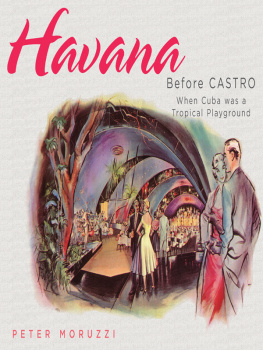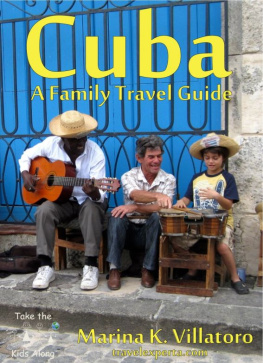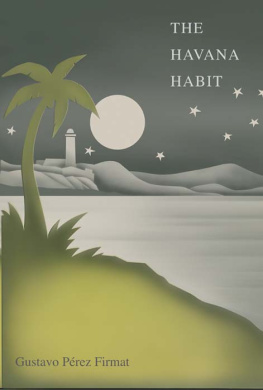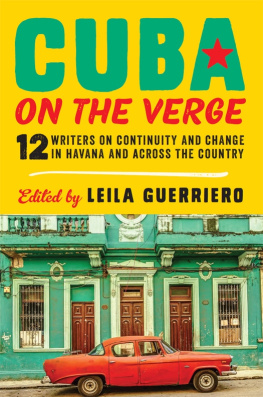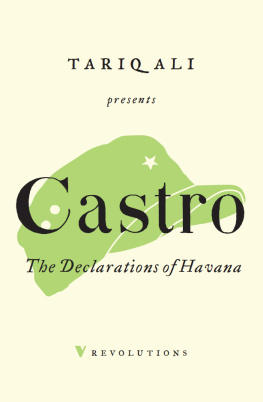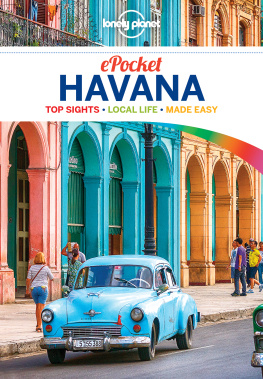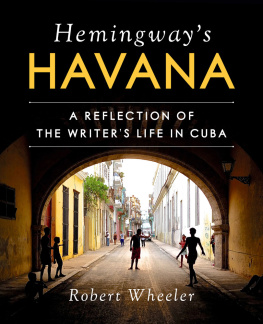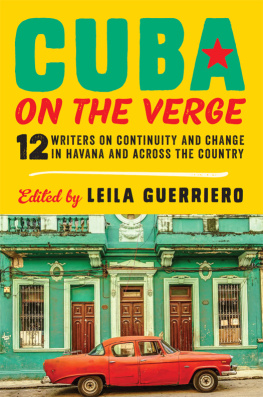Michael Dalling - Havana, There You Go!: The Changing Face of Cuba
Here you can read online Michael Dalling - Havana, There You Go!: The Changing Face of Cuba full text of the book (entire story) in english for free. Download pdf and epub, get meaning, cover and reviews about this ebook. year: 2016, publisher: Xlibris, genre: Detective and thriller. Description of the work, (preface) as well as reviews are available. Best literature library LitArk.com created for fans of good reading and offers a wide selection of genres:
Romance novel
Science fiction
Adventure
Detective
Science
History
Home and family
Prose
Art
Politics
Computer
Non-fiction
Religion
Business
Children
Humor
Choose a favorite category and find really read worthwhile books. Enjoy immersion in the world of imagination, feel the emotions of the characters or learn something new for yourself, make an fascinating discovery.

- Book:Havana, There You Go!: The Changing Face of Cuba
- Author:
- Publisher:Xlibris
- Genre:
- Year:2016
- Rating:3 / 5
- Favourites:Add to favourites
- Your mark:
- 60
- 1
- 2
- 3
- 4
- 5
Havana, There You Go!: The Changing Face of Cuba: summary, description and annotation
We offer to read an annotation, description, summary or preface (depends on what the author of the book "Havana, There You Go!: The Changing Face of Cuba" wrote himself). If you haven't found the necessary information about the book — write in the comments, we will try to find it.
Havana, There You Go!: The Changing Face of Cuba — read online for free the complete book (whole text) full work
Below is the text of the book, divided by pages. System saving the place of the last page read, allows you to conveniently read the book "Havana, There You Go!: The Changing Face of Cuba" online for free, without having to search again every time where you left off. Put a bookmark, and you can go to the page where you finished reading at any time.
Font size:
Interval:
Bookmark:
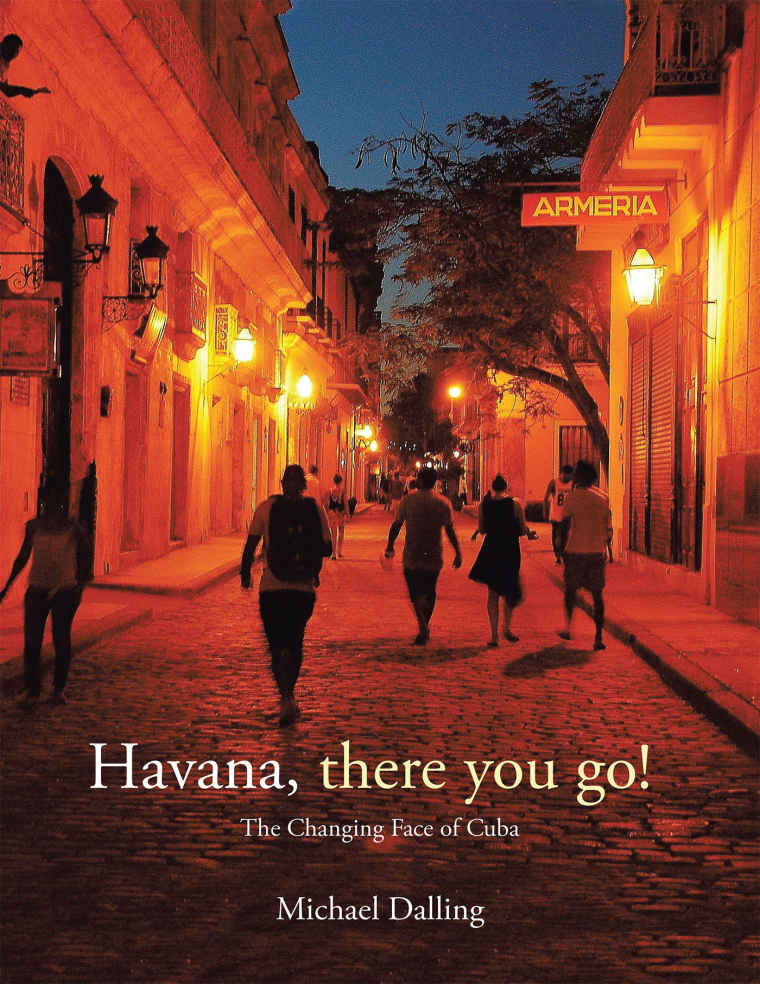
The harbor was large enough, and offered sufficient protection, to accommodate an entire fleet of Spanish ships and it was here that the islands subsequent capital, Havana, was establi shed. Havana now has a population of more than two million ranging across a large area, but its heart is Habana Vieja, the old city, which adjoins the harbor. With its narrow streets and crumbling buildings, some dating back several hundred years almost to the time of the conquistadors, the old city embraces the classicism, intellect and culture of an old world into which is seeping the vibrancy of the high-tech, cell phone world of t oday. The remarkable squares and classic architecture, the churches, palaces, castles, monuments, and a host of other antique buildings make the old city a work of art itself. Habana Vieja is both a Cuban national monument and a UNESCO World Heritage Site. Some sixty thousand people live in the old city, and the work of restoration that the government has embarked upon progresses slowly amid the hustle and bustle of daily life.
As you walk through the streets and peer into many of the doorways, you see dark passages, crooked and broken staircases, loose electrical wires, and here and there a faded poster of Che Guevara still clinging to the peeling w alls. However, turn in the opposite direction and youll find newly painted facades in red and yellow, blue or green, wonderfully restored Spanish balconies, colonnaded arcades and baroque churches. You could wander into one of the renovated squares and be surprised by the feeling of being in an old Spanish town; or you might enter the doorway of what appears to be a crumbling building to find yourself surrounded by stunning marble columns and marble-tiled fl oors. This is the enigma of Habana Vieja, and what makes the city such a fascinating p lace. Three of the oldest squares in Habana Vieja are the Plaza Vieja, which has been renovated with cafes, bars and restaurants in the corners; the Plaza de Armas, with its open-air stalls, arranged around a park, selling books, records, jewelry, and an assortment of arts and crafts; and the Plaza de la Catedral with its eighteenth century Catedral San Cristbal de la Habana. In the latter, on Sundays, the services and songs of praise are broadcast on loud-speakers to the overflow congregation sheltering in the shade on one side of the sq uare.
Close by is the old port and from here a ferry crosses the harbor channel to Casablanca, which is the site of the largest fort in Latin America, the Fortaleza de San Carlos de la Cabaa, built in the eighteenth century. Another ferry crosses to Regla which began as a sixteenth century fishing village on the east shore of the port and is now the site of the beautiful Iglesia de Nuestra Senra de Regla church built in 1810. From Habana Vieja the main road that runs around the bay is known as the Malecn. This borders Havana Centro and arrives in the Vedado section of the city. Here, standing grandly on the edge of the bay, is the Hotel Nacional with its shaded gardens and bars overlooking the water. Famous personalities from Winston Churchill to Hollywood stars among them Errol Flynn, Tyrone Power and Marlon Brando sipped mojitos at the terrace bar; and mobsters Lucky Luciano and Meyer Lansky met in the hotel to plan how they would divide up and run the city until they were thwarted by Fidel Castros 1958 revolu tion.
Outside the Nacional and everywhere in Havana brightly painted 1950s American automobiles cruise the streets offering a colorful and romantic flair to the city. These are mostly taxis and a great attraction for tourists. These classic vehicles are well maintained by their owners, and because U.S. parts have never been available, odd scraps of metal and pieces from other engines are used to keep them running. Their owners do a good job and it is a thrill to ride in them. Not far from the Nacional is a short street named Callejn de Hamel which is alive with Afro-Cuban arts and music.
This street attracts art-lovers, painters, sculptors, dancers and tourists alike, especially to dance to the rumba bands that perform here on Sun days. In Havana, the culture is enhanced by the nearly two hundred museums and monuments that appear around almost every corner. One of the most visited of these is the Hemingway museum in the southern part of the city at Finca Vigia, the 1887 colonial house where the writer lived and worked for twenty y ears. Set in its own grounds, the house has been preserved with each room containing Hemingways things as they were when he left, including his study and the typewriter on which he wrote Islands in the Stream and A Moveable Feast. Not far away in Habana Vieja, one of Hemingways favorite watering holes, the El Floridita, sits at one end of the popular shopping street called Calle Obispo. A life-sized bronze statue of the writer, with his glasses and a note book, leans against one corner of the long mahogany bar as if ready for his frozen daiquiri to be se rved.
Hemingway called Paris a moveable feast he might have called Havana a feast for the soul. There is an emotional and intellectual energy to Habana Vieja, and visually it is a photographers dream. The images stay with you long after you have left. Those who live in the city are generally the most friendly and helpful people I have encountered anywhere in the world. Under Castros Communist regime, the standard of living leaves a lot to be desired but the government has provided an excellent educational system, a high literacy rate (higher than that of the United States), universal healthcare, and inspired a thriving arts and cultural commu nity. and Cuba, life in Cuba will change. and Cuba, life in Cuba will change.
In years to come, the larger city of Havana is likely to succumb to the commercialization of the West but its impossible to think of the old city, Habana Vieja, being anything but the captivating place it is t oday.  A shady street in the old city
A shady street in the old city  Street scene in the old city
Street scene in the old city  Faade and entrance of restored house in the old city
Faade and entrance of restored house in the old city  The Capitol seen through the narrow streets of the old city
The Capitol seen through the narrow streets of the old city 
Font size:
Interval:
Bookmark:
Similar books «Havana, There You Go!: The Changing Face of Cuba»
Look at similar books to Havana, There You Go!: The Changing Face of Cuba. We have selected literature similar in name and meaning in the hope of providing readers with more options to find new, interesting, not yet read works.
Discussion, reviews of the book Havana, There You Go!: The Changing Face of Cuba and just readers' own opinions. Leave your comments, write what you think about the work, its meaning or the main characters. Specify what exactly you liked and what you didn't like, and why you think so.

